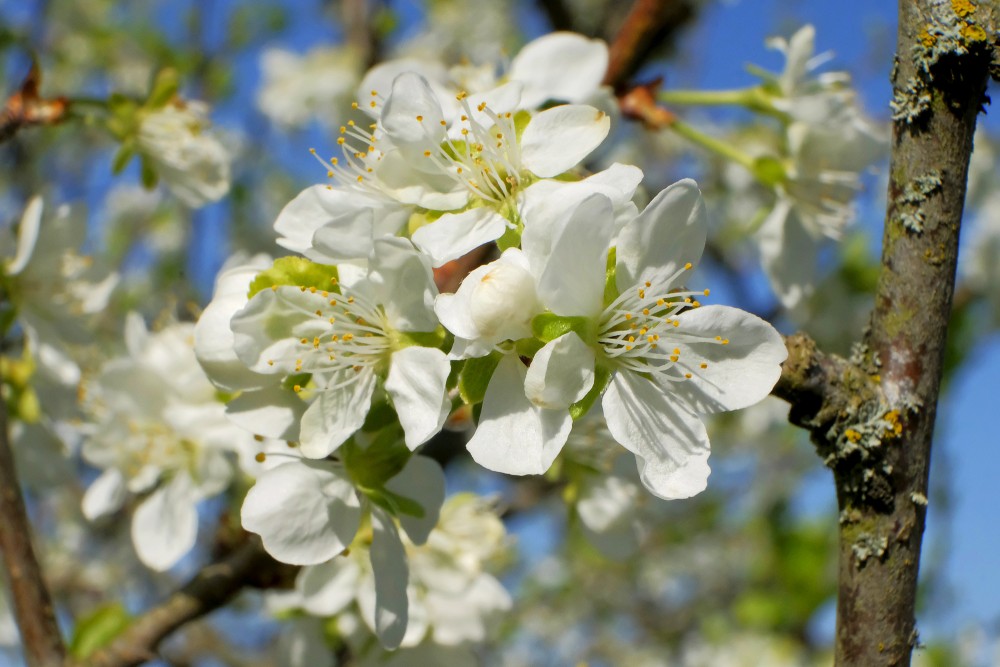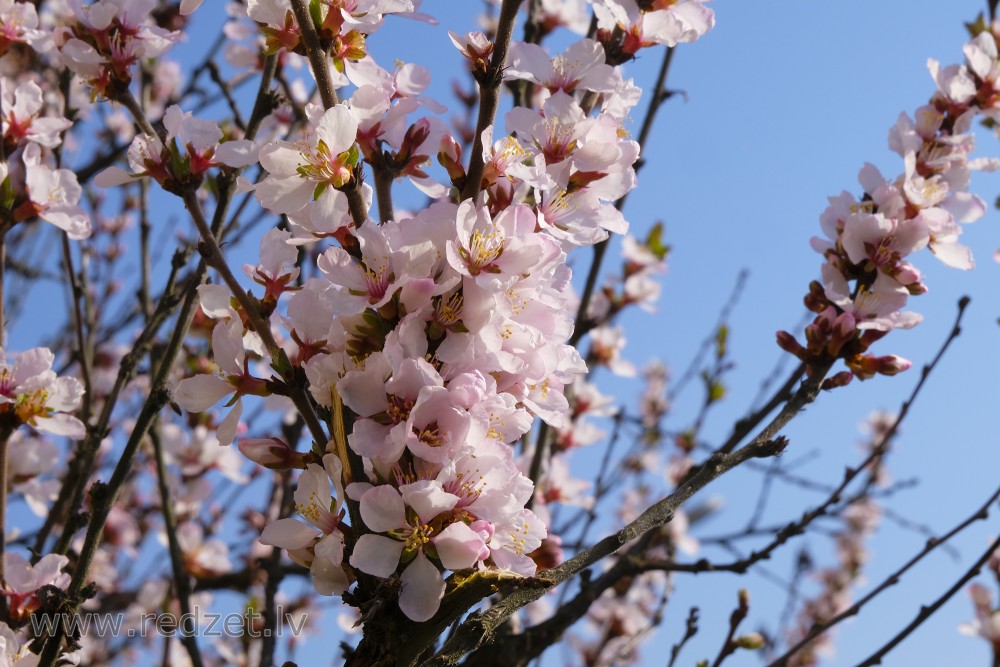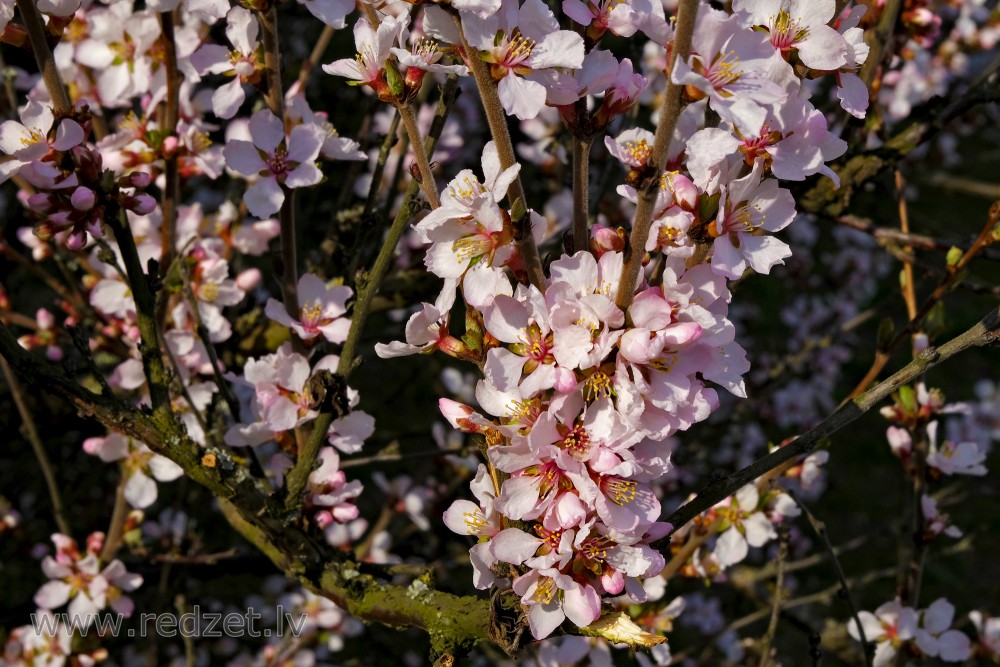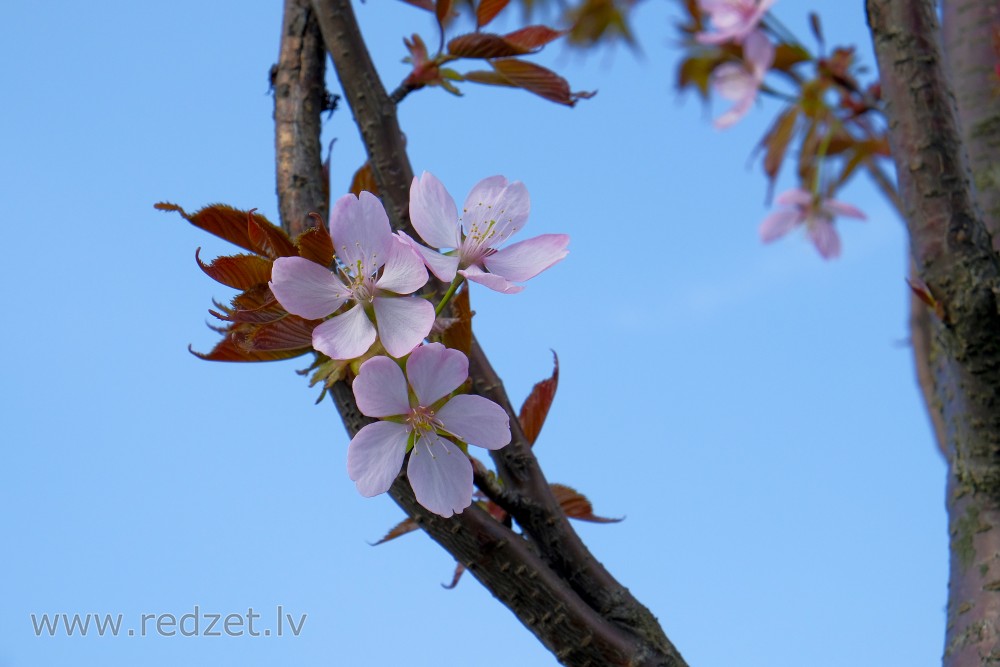Prunus
Prunus is a genus of trees and shrubs, which includes the plums, cherries, peaches, nectarines, apricots, and almonds.
Native to the northern temperate regions, there are 430 different species classified under Prunus. Many members of the genus are widely cultivated for their fruit and for decorative purposes. Prunus fruit are defined as drupes, or stone fruits, because the fleshy mesocarp surrounding the endocarp (pit or stone) is edible. Most Prunus fruit and seeds are commonly used in processing, such as jam production, canning, drying or roasting.
Scientific classification
Kingdom: Plantae
Clade: Angiosperms
Clade: Eudicots
Clade: Rosids
Order: Rosales
Family: Rosaceae
Tribe: Amygdaleae
Genus: Prunus
Botany
Members of the genus can be deciduous or evergreen. A few species have spiny stems. The leaves are simple, alternate, usually lanceolate, unlobed, and often with nectaries on the leaf stalk. The flowers are usually white to pink, sometimes red, with five petals and five sepals. There are numerous stamens. Flowers are borne singly, or in umbels of two to six or sometimes more on racemes. The fruit is a fleshy drupe (a "prune") with a single relatively large, hard-coated seed (a "stone").
Within the rose family Rosaceae, it was traditionally placed as a subfamily, the Amygdaloideae (incorrectly "Prunoideae"), but was sometimes placed in its own family, the Prunaceae (or Amygdalaceae). More recently, it has become apparent that Prunus evolved from within a much larger clade now called subfamily Amygdaloideae (incorrectly "Spiraeoideae").
Classification
Linnean classification
In 1737, Carl Linnaeus used four genera to include the species of modern Prunus—Amygdalus, Cerasus, Prunus and Padus—but simplified it to Amygdalus and Prunus in 1758. Since then, the various genera of Linnaeus and others have become subgenera and sections, as it is clearer that all the species are more closely related. Liberty Hyde Bailey says: "The numerous forms grade into each other so imperceptibly and inextricably that the genus cannot be readily broken up into species."
Modern classification
A recent DNA study of 48 species concluded that Prunus is monophyletic and is descended from some Eurasian ancestor.
Historical treatments break the genus into several different genera, but this segregation is not currently widely recognised other than at the subgeneric rank. ITIS recognises just the single genus Prunus, with an open list of species, all of which are shown below, under "Species".
One standard modern treatment of the subgenera derives from the work of Alfred Rehder in 1940. Rehder hypothesized five subgenera: Amygdalus, Prunus, Cerasus, Padus and Laurocerasus. To them C. Ingram added Lithocerasus. The six subgenera are described as follows:
Prunus subgenera:
- Subgenus Amygdalus, almonds and peaches: axillary buds in threes (vegetative bud central, two flower buds to sides); flowers in early spring, sessile or nearly so, not on leafed shoots; fruit with a groove along one side; stone deeply grooved; type species: Prunus dulcis (almond).
- Subgenus Prunus, plums and apricots: axillary buds solitary; flowers in early spring stalked, not on leafed shoots; fruit with a groove along one side, stone rough; type species: Prunus domestica (plum)
- Subgenus Cerasus, cherries: axillary buds single; flowers in early spring in corymbs, long-stalked, not on leafed shoots; fruit not grooved, stone smooth; type species: Prunus cerasus (sour cherry)
- Subgenus Lithocerasus: axillary buds in threes; flowers in early spring in corymbs, long-stalked, not on leafed shoots; fruit not grooved, stone smooth; type species: Prunus pumila (sand cherry)
- Subgenus Padus, bird cherries: axillary buds single; flowers in late spring in racemes on leafy shoots, short-stalked; fruit not grooved, stone smooth; type species: Prunus padus (European bird cherry)
- Subgenus Laurocerasus, cherry-laurels: mostly evergreen (all the other subgenera are deciduous); axillary buds single; flowers in early spring in racemes, not on leafed shoots, short-stalked; fruit not grooved, stone smooth; type species: Prunus laurocerasus (European cherry-laurel)
Another recent DNA study found that there are two clades: Prunus-Maddenia, with Maddenia basal within Prunus, and Exochorda-Oemleria-Prinsepia, but further refinement shows that Exochorda-Oemleria-Prinsepia is somewhat separate from Prunus-Maddenia-Pygeum, and that, like the traditional subfamily Maloideae with apple-like fruits, all of these genera appear to be best considered within the expanded subfamily Amygdaloideae. Prunus can be divided into two clades: Amygdalus-Prunus and Cerasus-Laurocerasus-Padus. Yet another study adds Emplectocladus as a subgenus to the former.
en.wikipedia.org



























